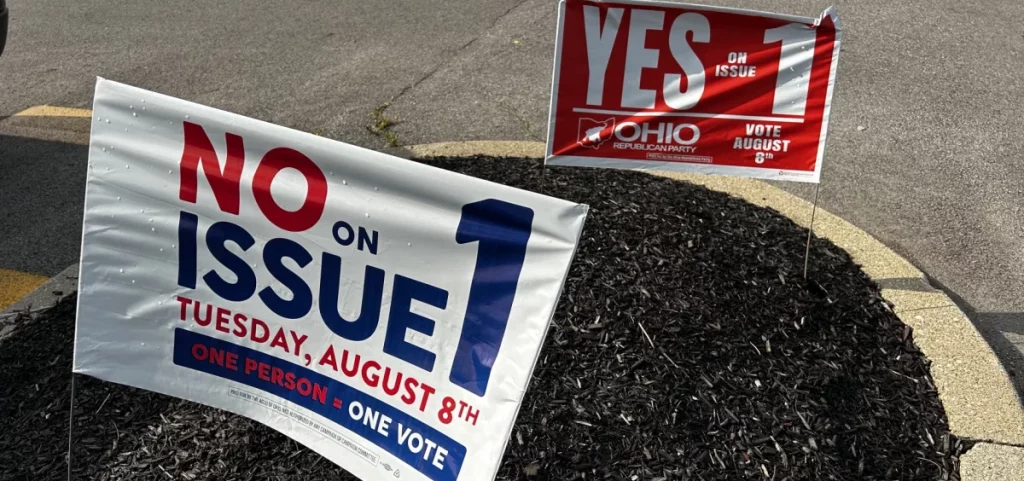News
Most of the money raised in Ohio’s Issue 1 campaign is coming from out-of-state sources
By: Jo Ingles | Statehouse News Bureau
Posted on:
COLUMBUS, Ohio (Statehouse News Bureau) — New campaign finance filings show out-of-state money is flowing to both sides in the debate over Issue 1, the amendment on the Aug. 8 special election ballot that would make it harder to change the constitution. The money gap between the main pro- and anti-Issue 1 groups is big.

Money for the “yes” on Issue 1 side
The primary group pushing Issue 1, Protect Our Constitution, raised $4.8 million and $4 million of it came from one Illinois businessman: Richard Uihlein the owner of ULine, a company that makes shipping containers.
Around 14% of Protect Our Constitution’s money came from inside Ohio, including a donation from Jimmy and Dee Haslam, who own the Cleveland Browns and Columbus Crew. The group also got $150,000 from Save Jobs Ohio, an effort funded by the Ohio Chamber of Commerce.
When it comes to spending, the group has only spent about a third of the money it’s raised.
Money for the “no” side
The major group opposing Issue 1, One Person, One Vote, raised $14.8 million. Most of that was also outside money too but it was more diversified than the money that flowed into the yes campaign. $2.6 million came from a dark money progressive group called the Sixteen Thirty Fund. Another $1.875 million from a liberal social justice organization in Californa known as the Tides Foundation. The National Education Association also gave $1 million to the “vote no” campaign.
When it comes to outside money, more of the opposition group’s money came from inside Ohio. A total of 22% of the money received by One Person, One Vote came from donors inside Ohio, including $1 million from the Ohio Education Association, the state’s largest teachers union.
The group has spent 70% of what they’ve raised, much of it on TV ads.

